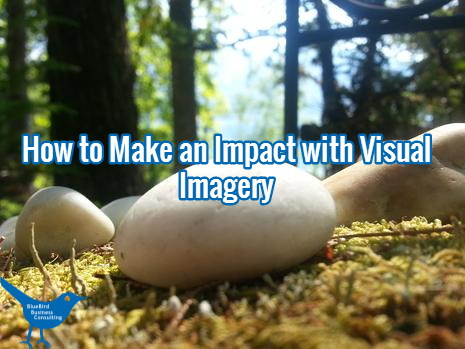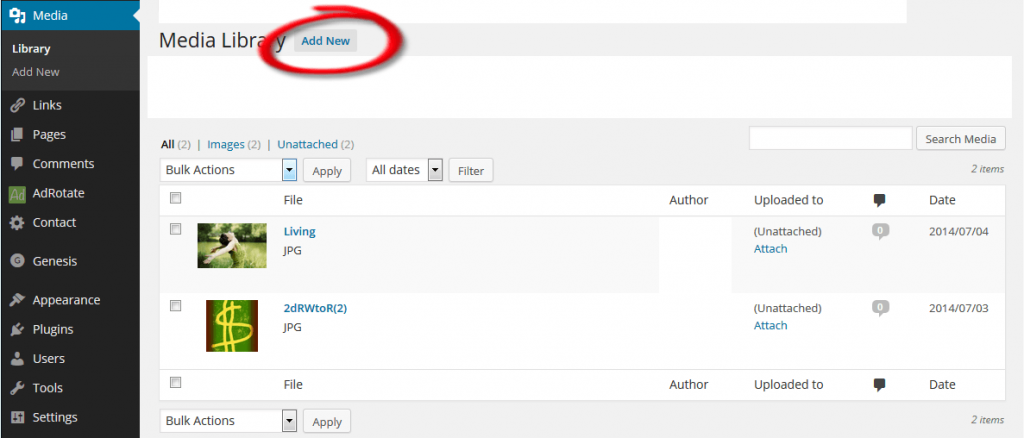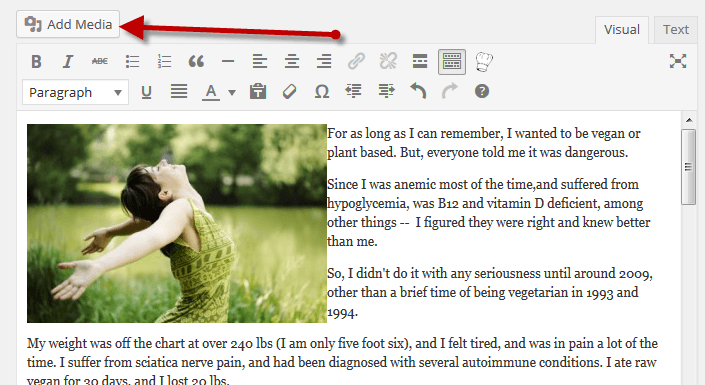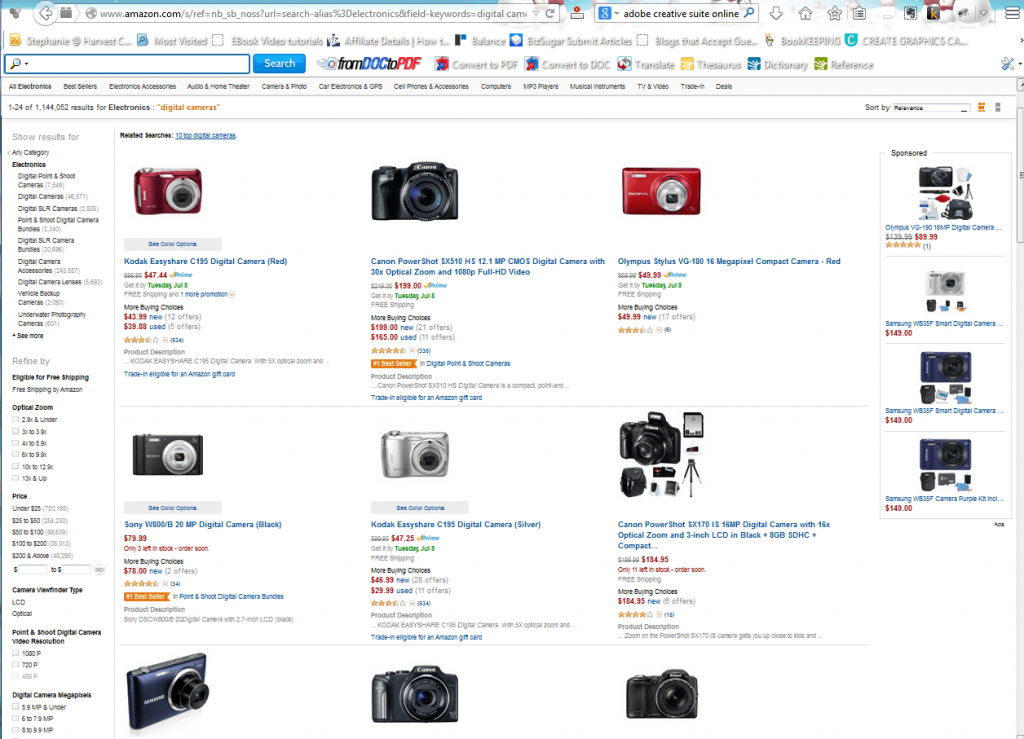The internet is a more and more visual place. We absorb information much quicker if it’s packaged in an image and good images that tell a story get shared more. Yes, you can buy stock images but if your own photography skills are up to the task your posts will be a lot more personal.
Not every person with a smartphone is a photographer but I am increasingly seeing more people that produce fascinating images and tell stories with their images.
I love to take pictures with my phone (Samsung Galaxy S3) and for years now I often take pictures with the goal to create images for my blog.
Blogs today are so much more than the chronological journal entries of the past. Today, they are artistic expressions of the writer’s vision. Images are needed to keep the reader’s interest, help explain a concept, evoke emotion and make your blog look visually pleasing.
You can make a real impact with visual imagery by using your own photographs, even if you’re not a professional photographer. All you need is to understand how to take and use great photographs for your blog content.
Why Photographs Are Important for Content
Today the Internet has become a very visual medium. In the not too distant past everything was text based with few or no images. It was all quite boring. But with better technology, larger hard drives and faster Internet, images are easier than ever to use. We are visual by nature and the more images we see online, the more we understand the content and its context.
- We Are Visual Creatures – About 90 percent of information that we absorb into our brain is visual. What’s more, visual content is understood by the brain faster than text. This explains the popularity of comic books, which a reader can read and understand many times faster than a book with only text.
- The Proliferation of Image Only Social Media – Today, visual social media is growing by leaps and bounds. Even formerly text-only social media is becoming more image-friendly, and for good reason. Images are shared more than just text. The entire point of social media is to share and engage. Images improve this factor.
- Interactive Capability of Images – Increased engagement has been tracked across all social media networks when images are used. The most shared information on Twitter happens to be YouTube videos, with still images a close second. Even on Facebook, people are more likely to share something with a compelling image along with the content.
- Blog Posts with Images Get More Views – When someone wants to read a blog post they are much more likely to get more out of it when an image is included. Plus they’re more likely to keep reading when there are relevant images associated with the post.
- High Quality Images Garner More Trust – Don’t slap up any old images on your blog post and expect to get more views. Avoid clipart and poor quality images like the plague. These types of images can make your blog look low quality and like you don’t even care.
The bottom line is, adding photos to your blog content will enhance your content exponentially. You’ll increase the stickiness of your blog, attract new readers, and build trust by showing how important your blog is by adding quality images. What’s more, if you take the images yourself you no longer have to worry about those pesky copyright rules and regulations.
How to Take Great Photos
It seems like everyone has become an amateur photographer today. Well, at least there are a lot of people who are taking a lot of photos, especially the so-called “selfie”. You don’t have to be a great photographer or trained in the art of photography these days to take excellent, high-quality images to use on your blog. You just need a decent digital camera and some understanding of how your camera works. Some general understanding about how light works to enhance your photographs doesn’t hurt either.
- Get to Know Your Camera – It doesn’t matter what kind of camera you have, but understanding what kind of shots you can take with your camera is important. Whether you use your iPhone, a Canon Powershot, or a fancy high-end digital SLR camera like a Canon EOS-1D C Camera, you can take appropriate pictures for your blog if you understand what your camera can and cannot do.
- Understand the Rules of Composition – The down and dirty rules of composition are: make the scene simple, fill your frame, avoid putting your subject in the center, try different angles, pay attention to the background and contrast colors, and finally don’t be afraid to experiment and break all these rules to get a good shot.
- Learn How to Focus for Effect – Sometimes you might want your camera to focus on what’s behind your subject over the subject, or you want to place focus on a particular area in the frame. If you can learn how to control your focus, you can create some excellent pictures. For example, if you have a food blog and someone is holding out some cupcakes, you want to focus on the cupcakes, not the person holding the cupcakes.
- Comprehend How Shutter Speed Affects Action – If you are taking pictures of moving objects, it’s imperative that you learn all about how shutter speed affects action in your pictures. You can make a moving object appear to be completely still with the right shutter speed. If you have a camera that allows you to play with shutter speeds, practice to see how your photos are affected.
- Know What Kind of Lighting You Need – Hardly anything is as important as lighting. Lighting helps bring out the colors in the shot more than almost anything else. Light can blur wrinkles, make the scene more creative, and essentially help you get a great shot with any camera you have. A really great photographer understands how light works, and often requires little editing after they get the shot.
- Learn the Basics of Using an Image Editor – Even if you master lighting, it’s good to get to understand the basics of a good image editor. There are many different types of editors you can use, from free to super expensive. An image editor can help you make a good photograph into an excellent photograph, sometimes with something as simple as proper cropping. Some editing software to try:
- GIMP – This is open source free image editing software comparable to Photoshop.
- Adobe Creative Cloud – You can now use Adobe Creative Cloud for a low monthly fee. This can be a great way to learn how to use the software.
- Canva – This is awesome and easy to use free online software that you can use to layout your images into prefab designer layouts.
- Pixlr – Another free online cloud-based image editing software suite that has a few more photo editing features than Canva but doesn’t offer the designer layouts.
- Use a Light Box When Appropriate – You can create a terrific homemade light box or buy a kit to help. A light box is great for using when taking pictures of objects, food, and smaller items, to better control the lighting to take great pictures.
Taking great photos for your blog doesn’t have to be a full-time job. Once you learn the basics, you’ll be able to take excellent pictures that perform the task that you want them to perform –which is to attract more readers, keep them reading, and convey a particular mood or feeling to your audience.
Coming Up with Unique Ideas
Sometimes it can be difficult to come up with ideas of the type of photographs you need for your project. It depends on the topic of your blog, and your niche. Some blogging niches are easier to come up with ideas for pictures than others. Food bloggers can simply take pictures of their recipes and process, while a marketing blogger might have to dig a little deeper. However, the creative process for coming up with unique ideas isn’t really much different from coming up with any creative idea.
- Brainstorm – Let all your ideas flow without thought to any logic whatsoever. Set a timer for 15 minutes and write down every single idea that comes to your mind. Nothing is wrong, right, or too crazy. Just write down everything that comes to your mind. Let it rest a day or two, then go back and edit for reality.
- Research Your Topic – This method can be a little dangerous because you set yourself up by comparing yourself to others, but you can get ideas from your competition on how they are using images on their blog. What type of images do they use? What would you do differently? Is it stock photography or is it their own? What can be done to make it more special?
- Change Perspectives – Instead of looking at something from your point of view, try looking at things from your audience’s point of view. Of course, you should be doing that anyway but if you’re not, make a point of doing it. What kind of images do they want? What kind of images will make your content easier to digest, understand and use?
- Take a Walk (or a Shower) – Getting out of your own way can help a lot. Doing something that gets you away from your desk, and away from thinking about your need for images for your blog and photography in general, can help you focus better later. Also, a well-known fact is that when you try to stop thinking about something a great idea comes to you – especially in the shower.
- Play Music – Even if you don’t like it, classical music is an excellent type of music to listen to when you are working. It lacks words, and can bring out the artistic side of you because you won’t be singing the lyrics; you’ll simply be lost in the sounds and feelings that the music evokes. This type of music can help you become more creative and give you the push you need to think of something awesome.
- Do Something Artistic – The more types of artistic things you indulge in, the more artistic your brain will become. Take up painting, pottery, knitting or sewing. All of these things require some thought outside of your business (pick something not related to your work) so that you can let your mind wonder to the fabulous images you will take for your blog.
- Unplug – It’s hard to focus when new emails, Facebook messages, or tweets are chirping away in your ear. Turn it all off. Turn off your telephone, and all technology. Force yourself to avoid multi-tasking for at least part of your day and you’ll be surprised at how creative you really are.
- Keep It Simple – Sometimes we make things far harder than they are. What’s the simplest photograph you can take for your blog post? Try taking that. Maybe it’s just what you need right now. Maybe you’re making it too difficult. If you’re talking about avoiding being overworked, maybe you need a picture of an overworked person or a messy house?
- Don’t Be Too Literal – It can be tempting to be too literal about the photographs you put on your blog. This can be dangerous for someone who has a blog about business-related items like marketing, for instance. We can only see so many pictures of people shaking hands before we just zone out.
- Images Can Be Used as Something Else – You can use images in infographics, memes, as a slide show background, and in other ways, aside from just a regular image inside a blog post. They can be used all over your website, blog, and social media accounts. They are your images, so there are no restrictions.
- Go Take Some Pictures – The easiest thing of all to do is to get out your camera and start snapping pictures. Just let it flow naturally, while thinking of the subject of your blog post. Not only should you think about the subject, but also think about the problems you’re trying to solve for your audience. While taking the pictures, leave no stone unturned in terms of the angle you can come from in terms of the topic of the photograph for your blog.
Coming up with unique photography ideas isn’t any different from coming up with unique content ideas. It just requires a little thought, imagination, time and practice.
Editing Your Photos
Once you have taken a number of photos, it’s time to edit them for use in your blog posts. As mentioned above, you have a lot of choices when it comes to editing software today – from free software to expensive graphic image suites. But, no matter what type of software you use to edit your images, it’s important to understand what needs editing and what doesn’t.
- Start with the Right Photograph – Taking the time to take a good picture to start with will enable photo editing to go a lot smoother. Good images are all about the shot at the time the shot was taken and aren’t all done in the editing room.
- Know the Size You Need for Your Blog Theme – Before you even start editing the photo, double check with your blog theme to ensure you are using the right size and resolution of photo for your theme. This is especially important when it comes to how thumbnails or featured images look on your blog.
- Know Where You Want Your Audience to Focus – Look at the lines in the picture before you place it or edit it. People have a habit of following lines in photographs just like they read a text a certain way. Understanding where you want focus will help you edit your photography images in such a way as to lead your audience the right way.
- Crop Images to Perfection – You want to avoid some obvious mistakes that most amateurs make when cropping images. First, ensure that your image is high enough resolution for cropping. This will depend on what type of camera you use and what you shot the picture of, as well as what lens you used.
- Avoiding Cutting Wrong – For landscape pictures, keep the horizon straight; even if the picture was crooked, you can fix it with the right cropping. When photographing people or animals, in order to show movement such as walking or running, try to avoid amputating your subject’s legs off. If the arms and legs are important, you want them to show.
- Experiment – No matter what the rules of composition are, the important thing is to feel free to experiment with cropping. The great thing about computer software is that you never need to ruin the original image. You can crop, edit, and add things to your photo without worrying about losing anything but time.
Learning your editing software, along with focusing on taking good images to start with, will help the task of editing go faster. Understanding about the art of composition will also help you avoid having pictures that look bad once they’re on your blog.
Incorporating Photos into Your Content
There is no doubt that adding photos to your blog posts can enhance your blog in a multitude of ways. Photographs attract the eye, and form a stopping point in the reader’s mind that makes them want to read more. They help the reader absorb information, too, especially if the images have been chosen with care. Thankfully, incorporating images into your blog content is a simple process.
Once you have the picture the right size and shape according to your theme requirements, then you can simply upload pictures to your media library. Just go to your media library and click “Add New”.
Once an image is uploaded to the media library it can be used within a blog post by clicking “Add Media” inside the post editor.

Once you click “Set featured image” you’ll again choose the image you want featured. It can be the same image you put in the blog post (typically) or another image entirely. In addition to that part, you can also add “alt” text within the WordPress dashboard.
The “alt” text is important for good SEO, and it is also important for disabled people who may be reading your website to know what the image is. WordPress gives you the option of placing your image to the left, right or center of your text. It’s up to you on how you want it to appear. The important thing is to be consistent.
Ideas about How to Incorporate Images into Your Blog Content
- “How To” Blog Posts – If your blog post is a “how to” post and you’re posting photos with step-by-step instructions such as how to cook a particular recipe, you may want to put them at the center on top of your text, or you might want to put the text on top of the picture - it’s up to you how you want to draw attention to the picture.
- Emotional Components – Images are great ways to evoke emotion. If you write a blog post about the importance of donating money to hungry children, an image of a hungry child, or an empty fridge, will always get more views and more donations than a blog without an image.
- Highlighting a Post – What if you wrote a post about five ways to market your business online? Instead of posting another picture of men shaking hands, why not put a picture of the number five, or five of something relating to your blog post?
- Invoke Humor – If you use any type of posts that use humor, allegory or examples outside of your typical niche to explain a concept in your niche, try using an equally allegoric image to bring attention to the story and your blog post.
Incorporating images into your blog posts can be a fun way to add more content to your blog. You can also make it look interesting by using online editing tools such as Canva which enables you to use your own photos or theirs with their professional layouts to make great blog images, social media images and more.
Photography Equipment Recommendations
You can find a lot of information about digital photography equipment simply by going to Amazon. Do a search for “digital photography equipment” and you’ll find a plethora of information that will be helpful.
Conversely you can look up “digital cameras” and even control your price point to choose the camera you can afford.
Using search on Amazon or Google can result in a lot of information to help you pick out a good camera and other equipment.
Use Equipment You May Already Have
You might not realize it but it’s likely that your smart phone such as the iPhone 5 offers the ability to take excellent, high quality photos that you can use for your blog. There are many reasons you may choose to use your iPhone 5 or other full-featured smart phone instead of purchasing a special camera.
- You Already Own One – If you already have a powerful smartphone like an iPhone 5 there truly is no reason to go out right now and buy a digital camera. The iPhone has many powerful features that you cannot get anyplace else when it comes to taking great pictures. And, you already own it. Nothing to buy.
- It’s Simple to Use – The iPhone 5 has many built-in features such as a camera control center, panorama view, action shot ability, photo filters and even mapped pictures. Plus, you can post directly to your WordPress blog with the right apps and plugins, right from your phone. Not to mention, you probably are more likely to keep your iPhone with you than you are to remember to bring a bulky camera.
- Many Awesome Apps Available – Just go to WordPress plugins and do a search for your iPhone and/or iOS, and you’ll find apps and plugins that can help with mobile posting, mobile picture uploads, video uploads and much more. Don’t forget to download WordPress for iOS. If you don’t like that, you might like BlogPress or ManageWP for iOS and Android instead. Don’t forget to check out Camera+, ProCamera 7, Snapseed, Slow Shutter Cam, or the multitudes of other apps you can get for your iPhone to make your camera better on the iTunes Store. Consider extending the space on your iPhone by using Dropbox to store photos and other information.
- You Need a Camera (and a Phone) Anyway – If you don’t already have an iPhone 5, and you don’t have a good camera of any kind, you might want to consider the iPhone 5. It has iSight camera optics, great apps available, fabulous editing ability (right on the phone) and the ability to get the images uploaded to your image library easily. You may be surprised at the quality you can produce with your iPhone 5. People are even using iPhone 5’s to shoot commercials, and you can also use your iPhone with PhotoShop.
The fundamentals are the same regardless of what technology you choose to use. Research your choice, practice using the tools and apps available, and keep improving as time goes on. Don’t expect to be perfect from the start, and don’t wait for perfection to get started. Instead, get started adding images to your blogs now, and watch how you improve over time.
Blogs That Use Excellent Photography
A little eye candy goes a long way. Don’t overwhelm your blog with too many images, but make sure the ones you use are high quality images that are edited and cropped properly. As a blogger, getting good content up is a priority and one type of content is excellent images from your own photography. Here are some really good examples of websites that use great imagery through photography.
[listly id="O12" layout="gallery" show_header="false" show_author="true" show_sharing="true" show_tools="true" per_page="25"]
In Conclusion
You’ve learned how important photography is to increase the stickiness of your blog. You’ve learned that blog visitors are more likely to share your blog if it has awesome imagery. In addition, you’ve received an overview of how to take great photos, how to come up with ideas, how to edit your photos and incorporate them into your content.
Finally, you’ve learned about various types of photography equipment that you can use to take excellent pictures. Now it’s just up to you to get started.
Download this post as an ebook
It’s free if you share this post on Twitter or Facebook!











